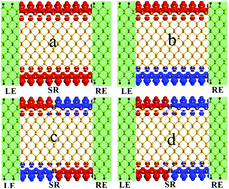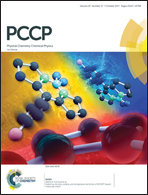Spin-dependent transport properties of zigzag phosphorene nanoribbons with oxygen-saturated edges
Abstract
We investigate the electronic structures and electronic transport properties of zigzag phosphorene nanoribbons with oxygen-saturated edges (O-zPNRs) by using the spin-polarized density functional theory and the nonequilibrium Green's function method. The results show that the O-zPNR is an antiferromagnetic (AFM) or ferromagnetic (FM) semiconductor with spins localized at two ribbon edges anti-parallel or parallel with each other. The electronic transmission for the single AFM or FM O-zPNR is zero when a bias voltage is applied to the two electrodes made of the same type O-zPNR. Nonzero transmission arises for the AFM–AFM and FM–FM O-zPNR heterojunctions. The transmission spectrum and the electrical current are fully spin polarized for the FM–FM O-zPNR heterojunction. An in-plane transverse electrical field can effectively manipulate the electronic structure and spin-dependent electronic transport. It induces splitting of the spins of the two edges and makes the AFM O-zPNR become a half metal. Moreover, the transverse electrical field gives rise to the transmission spectrum and the spin polarized electrical current for the AFM–AFM O-zPNR heterojunction. The degree of spin polarization can be tuned by the strength of the transverse field.



 Please wait while we load your content...
Please wait while we load your content...